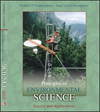 |  Principles of Environmental Science William P. Cunningham,
University of Minnesota
Mary Ann Cunningham,
Vassar College
Environmental Conservation: Forests, Grasslands, Parks, and Nature Preserves
Learning ObjectivesAfter studying this chapter, you should be able to
I.discuss how and why old-growth temperate and tropical forests are being disturbed, as well as ways they might be preserved. |
 |  |  | II.explain why conservationists criticize large clear-cuts and forest road building. |
 |  |  | III.recount how overgrazing can lead to desertification in arid lands. |
 |  |  | IV.understand the origins and current problems of national parks in America and other countries. |
 |  |  | V.evaluate the tension between conservation and economic development, and how the Man and Biosphere program and ecotourism projects address this tension. |
 |  |  | VI.evaluate some of the controversy over wilderness area management, as well as how people in developing countries feel about the concept of wilderness. |
 |  |  | VII.explain the need for, and problems with, wildlife refuges and nature preserves in the United States and elsewhere in the world. |
|



 2002 McGraw-Hill Higher Education
2002 McGraw-Hill Higher Education